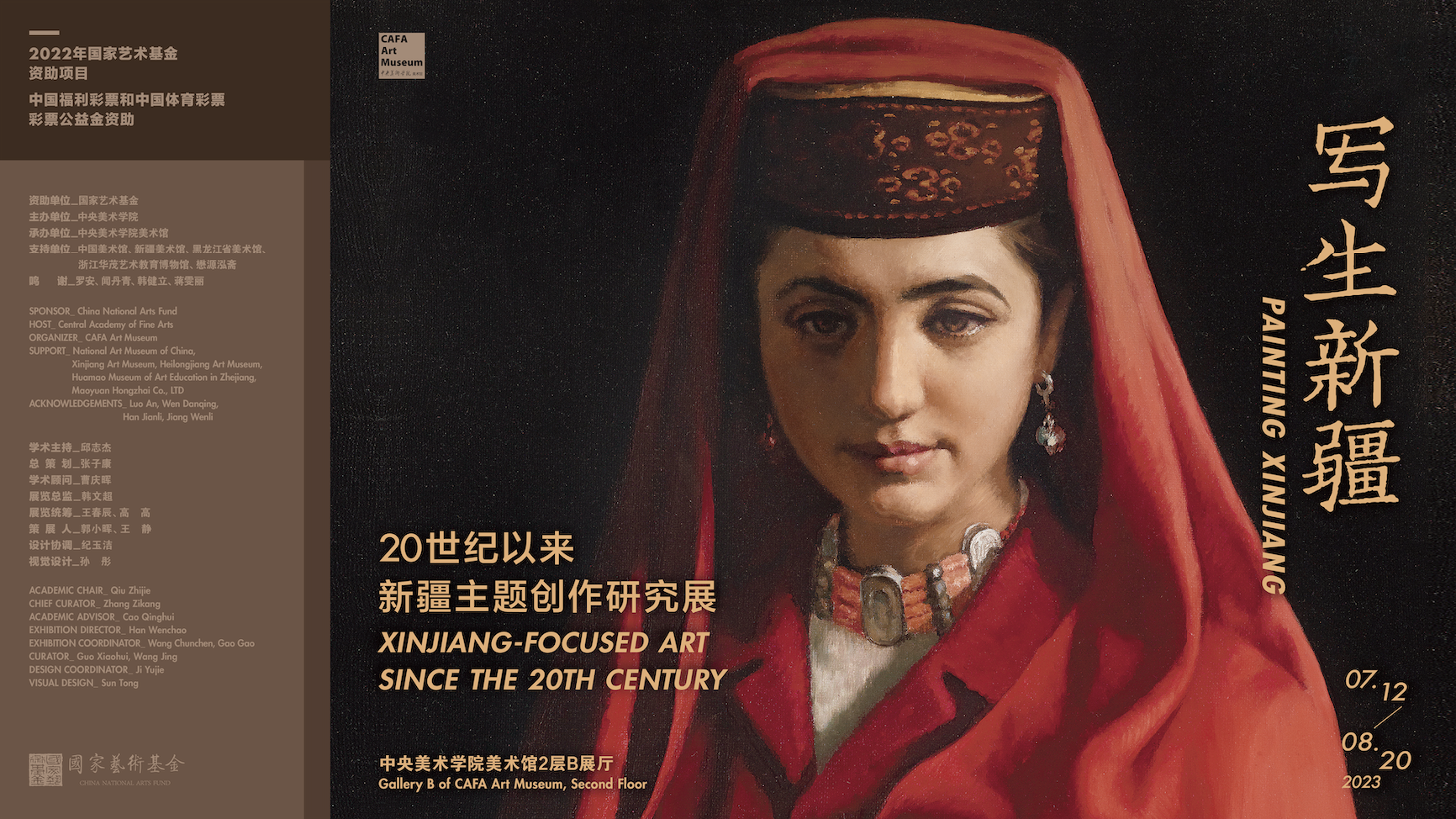
Paingting
Xinjiang: Xinjiang-focused Art since the 20th Century
2023.7.12-8.20
CAFA ART MUSEUM
No.8 Hua Jia Di
South Rd.,Chao Yang District, Beijing, China
The exhibition " Paingting Xinjiang: Xinjiang-focused Art since the 20th Century" aims to present signature artworks from 20th century China that have Xinjiang as their subject matter. It focuses on the unique phenomenon in Chinese modern art history, in which waves of artists travel to remote Xinjiang to create studies as a group artistic endeavor. The exhibition is curated by Guo Xiaohui, with co-curator Wang Jing. The academic host of this exhibition is Zhang Zikang, the directior of CAFA Art Museum.
Artists featured in the exhibition include (in order of birth): Han Leran, Situ Qiao, Ye qianyu, Wang Henei, Luo Gongliu, Dai Ze, Liang Yulong, Huang Zhou, Wu Biduan, Lie Yang, Quan Shanshi, Wen Lipeng, Zhang Wei, Yang Mingshan, Jin Shangyi, Pang Jun, Tan Quanshu, Aman Mukhanov, Xie Jiadao, Su Gaoli, Long Qinglian, Gong Jianxin, Wen Guozhang, Fan Di'an, Zhang Qun, Yu Xiaodong, Liu Xiaodong, Yang Maoyuan, Husidan Kerim, Zhao Peizhi, Liu Shangying, Liu Yujia and Kang Chunhui. The exhibition places emphasis on "Xinjiang" as visual reference and its influence on these artists and their work, as well as artistic breakthroughs with the genre of "study." It is a demonstration of explorations and achievements by Chinese artists since the 20th century, a historical contribution.

Han Leran, Singing and dancing at the foot of mount Tianshan, Oil on canvas, 48x63cm
![]()
Jin Shangyi, Tajikistan Bride, 60x50cm, Oil on Canvas, 1983

Jin Shangyi, Tajikistan Bride, 60x50cm, Oil on Canvas, 1983

Quan Shanshi, Uyghur Old Man, 195x80cm, Oil on Canvas, 1998
The exhibition divides the historical period into four chapters chronologically and a special case studies section in contemporary art practice. The four chapters include the pioneer period before 1949, art in socialist China (1949-1979), China after opening-up (1979-2000), present day China (2000-present) . Through showcasing studies in Xinjiang from these four periods, the exhibition tris to addresses questions include: What ideologies is at work in such an operation concerning Xinjiang, and how did the ideologies operate and provide articulations in a total system of art production. And most significantly, how do these ideologies work in and articulate artistic practices. Secondly, what role did the unique cultural and geographical characteristics of Xinjiang play in this artistic practice?
Situ Qiao, Lassoing, 97.5x222cm, Oil on canvas, 1955
![]() Ye Qianyu, Dance,140×252cm,Ink and color on paper, 1986
Ye Qianyu, Dance,140×252cm,Ink and color on paper, 1986
 Ye Qianyu, Dance,140×252cm,Ink and color on paper, 1986
Ye Qianyu, Dance,140×252cm,Ink and color on paper, 1986
Studying, the method which sets the artist directly in front of his/her subject matter, has particular significance in the history of China's modernization period. Ever since the May 4th movement, Chinese intelligentsia such as Chen Duxiu and Kang Youwei have recommended the method, claiming that Chinese painting must borrow and learn from the realistic spirit of Western oil painting, to be used as a weapon against older culture. In his 1943 "Talks at the Yan'an Conference on Literature and Art," Chairman Mao Zedong argued that "the proper writer or artist must continuously, unconditionally and dedicatedly go to the masses of workers, farmers and soldiers, to where the fighting is thickest, to that single largest and richest resource, to observe, to experience, to study and to analyze all people, the original material of literature and art. Only then can you begin the process of creation." Thus, artistic studies have transformed from merely a technical preparation to a mode of practice, from which background also sprung the Chinese style of realism. Similarly, the Chinese concept of artistic study has prospered alongside with Chinese realism, neoclassicism.

Liu Yujia, Treasure Hunt., Still Image,53'14'' Single Channel 4K film,color,stereo sound, 2020-2021

Liu Shangying, Wilderness Project,Oil on canvas,320×1730 cm, 2019
Apart from discussing the act of creating studies itself, the unique cultural characteristics of the region must also be emphasized. Throughout history, Xinjiang has contributed significantly to the visual arts. Ancient cave paintings mark the birth of Eurasian civilization, Han and Tang period Buddhist statues carried the light of art to broad regions, and the silk road connects multiple cultures including China, India, Arabia and Greece. The uniqueness of Xinjiang gave rise to its singular cultural and geographical scenery, a source inspiration which attracted so many artists to create studies there. In the 20th century, great amounts of artists trained in the modern artistic language have come to the heart of Xinjiang. Through the process of absorbing Xinjiang's cultural richness, they have also changed the situation in which the region's figurative art was always held sway by religious factors. Studies in Xinjiang led people to discover anew the beauty of China's terrains, and inspired people to rethink the value of art and culture. It could be said that the act of artistic studies in Xinjiang is both a personal choice on the artist's part as well as closely tied to paradigm shifts in Chinese modern and contemporary art history.
The exhibition attempts to present the enormous changes that have happened to this land since the founding of the People's Republic of China. From the cultural interactions within a multi-ethnic country to the sustained development of diverse cultures in the era of globalization, we can gain insight into the developmental thread of China's art history since the 20th century.
For More Information EN
